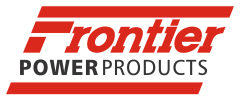Voltage 
Common single phase voltages in North America are 115 & 230. These voltages are often supplied by generator sets as they are frequently used in household type loads.
Common three phase voltages found in North America are 139/240, 120/208, 277/480 and 347/600. (Measured – line-to-neutral/line-to-line)
Hertz
Most of North America is 60 Hz or 60 cycles per second for AC power supply. It is not uncommon to have European or Asian equipment to power and this is usually 50 Hz. AC supply.
To produce 60 Hz power, engine driven generators will operate at 1800 rpm using a 4-pole generator. Lightweight, portable or residential generators may operate at 3600 rpm with a 2-pole generator. Larger generator sets may run at 1200 rpm (6-pole) or 900 rpm (8-pole) or 720 rpm (10 pole). (50 Hz is similar but 3,000 rpm for 2-pole, 1500 rpm for 4-pole, 1000 rpm for 6-pole etc.)
Phase
Residential and most light commercial services are single phase, 115/230V. Larger commercial and industrial services are normally three phase. Although there is no hard and fast rule, generators over about 50 kWe are usually three phase. On larger sets, if the loads are single phase loads, the line-to-neutral power is divided, as equally as possible amongst the phases to balance the loads on the generator’s windings.
Kilowatts
In this case, “kilowatts” refers to generator output kilowatts or kWe (sometimes ekW). The actual load on the generator set engine are the kilowatts required to operate the load. This should be carefully sized because the engine cannot be efficient without an adequate load. Too little load may cause diesel engines to “carbon up” with unburned fuel. This leads to sooting of the lubricating oil, component wear and eventually, premature engine failure. Conversely, too much load can shorten the life or damage the engine and generator.
Kilovolt-Amperes (kVA)
kVA is apparent load on the generator. The generator must be sized for the kVA requirement. Typically we use 0.8 as a power factor to estimate kVA. This is a convention and the power factor should be used if it is known. If the power factor is estimated, then the kVA will be the kWe ÷ 0.8 = kVA. (e.g. 100 kWe = 125 kVA where the power factor is 0.8)
Ambient Conditions
What will be the highest and lowest temperatures at which the generator will be expected to function? What will the maximum altitude be? Will it operate in dusty conditions? This will affect the air cleaner and pre-cleaner selection and may affect the fin spacing on the cooling radiator.
Enclosure Requirement
If the generator will be housed in an enclosure you may want to think about the possibility of the enclosure being affected by ice buildup or other weather related concerns. Service access will normally be looked after by the supplier but deserves consideration. Is sound attenuation required?
Engine Size
The end use of the machine will determine what engine best suits the job. As a rule, the larger the displacement, the slower the speed (rpm) the longer the life. However, a large displacement, slow speed engine is not the right engine for a portable application. So thought needs to be given to what the set will do over its intended lifetime. If you want to move it on site and leave it running for many years, you will select a different engine than someone looking for a generator set that can be readily relocated.
Sizing the engine properly is extremely important both for operating efficiency and for longevity. An engine operating with a light load cannot be efficient. In fact, light loads for extended time periods can cause serious damage to the engine.
Sound Control
If the prime power generator is going to be located in close proximity to people or sensitive ecosystems, controlling the noise level of the generator is another factor that needs to be considered. Advance planning for sound attenuation includes having sufficient space for a suitable exhaust system and, if required, for an enclosure. |
 Checklist of Things to Consider
Checklist of Things to Consider









